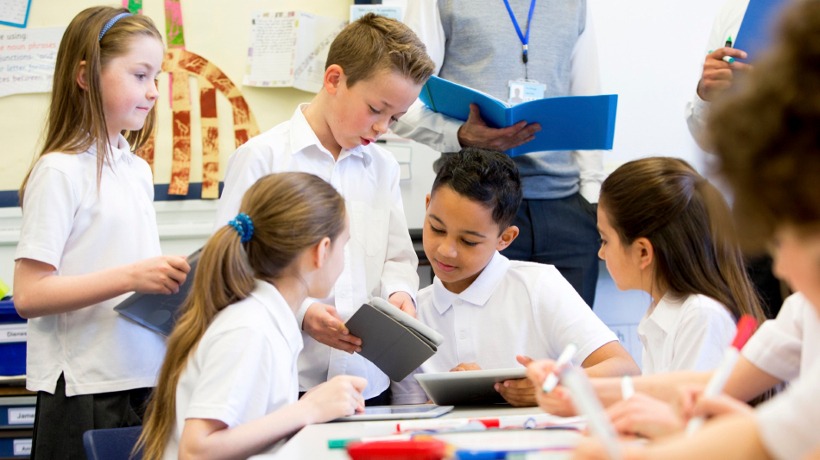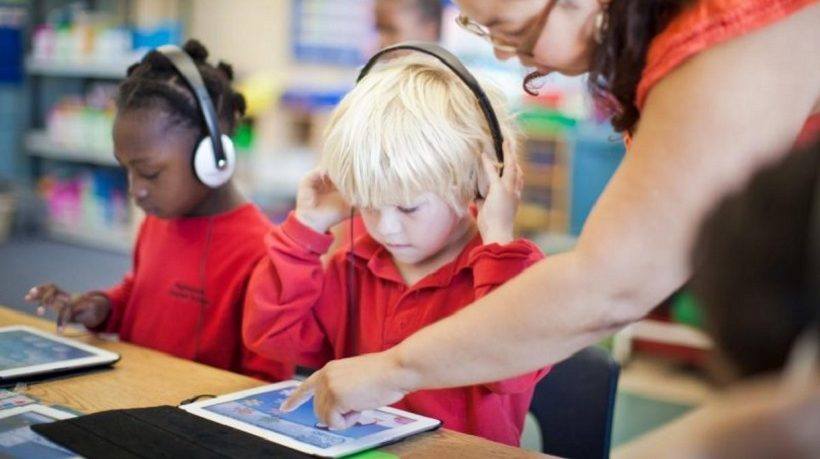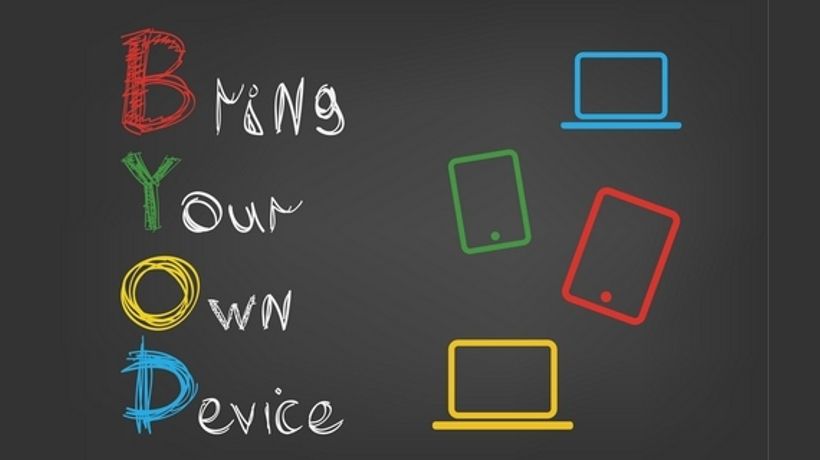Myths About BYOD (Bring Your Own Device) In The Classroom
Not long ago, the mobile devices were considered perfect for any past-time activity, and had no place in the classroom. But when students are allowed to bring their own devices to school, these can become valuable learning tools.
Adopting BYOD in schools seems like a win-win situation. Actually, it's more like a win-win-win one:
- Students win, as they can use their familiar devices in the classroom, connecting the educational environment with their personal one.
- Teachers win, as they can improve and update their teaching techniques by including more online resources, as well as a great number of educational apps.
- Schools win, as they don't have to spend a tremendous amount of money on buying each student a device, and on later maintenance.
Find out more about the benefits of BYOD in the classroom in this article.
But as with all things belonging to the real world, that one Murphy's law that says "anything that can go wrong, will go wrong" applies to BYOD as well. There are plenty of myths about BYOD as well as concerns about implementing BYOD in the classroom, which makes many educators unwilling to plunge in this still new pool.
However, the education system must prepare students for the adult life, and we, adults, use technology more than we would like to admit. So why shouldn't school keep up with the outside world, and include more technology in student instruction, especially when they can bring their own?
Let's face the fears surrounding BYOD and follow those that already achieved wonderful results by allowing students to bring their own devices to school and use them for their learning. So, I invite you to place the next 3 myths about BYOD in the classroom right next to dragons, flying horses, and the treasure at the end of the rainbow:
1. BYOD = Bring Your Own Distraction
Personal devices can be used for a lot of things. Students can play games, watch stupid videos, browse inappropriate websites, spend time on social media, or catch up on the latest episodes of their favorite series. And these are just the tip of the iceberg when it comes to all distractions these devices can enable.
At the same time, smartphones, tablets, and laptops can be used to access the school Learning Management System, with the corresponding courses and learning materials, conduct research online for a school paper, check facts fast, make use of productivity tools, and even access educational apps regardless of the internet connection. Again, this is just a small list of things that students can do with their devices that support their learning.
In 2012, Forsyth County Schools (FCS), Georgia, serving about 39,000 students in grades Pre-K through 12, gave BYOD a chance. They found that the use of personal devices in the classroom wasn't a distraction for their students. On the contrary, they often became more engaged, motivated, and self-directed learners.
According to K12 Blueprint, many FCS teachers report that classroom management of devices is not as challenging as they anticipated. In fact, the teachers who already incorporate project-based learning and have established a sense of community in their classrooms often describe a seamless transition with BYOD because the management strategies are the same, and the devices just give them more tools to complete the work of the community.
Contrary to expectations, FCS has actually noticed that disciplinary issues regarding technology have gone down since the implementation of BYOD. They report “It is surprising in some ways how normal it seems with the devices in the school.”
Read more about how FCS proved that BYOD does not cause students to be distracted in this PDF.
2. BYOD Is Not Safe
If students bring their own devices to class, schools can't possibly hold control over things like data security, software licences, malware and viruses, and safe browsing. Who should then take responsibility if something goes wrong?
Let me tell you something: BYOD is as safe as you make it. Possibilities are endless. A strong BYOD policy can help schools avoid these security concerns.
The first step is to ensure a strong and protected internet connection. Sometimes school IT architects underestimate the need for bandwidth, or how many users can access the internet at the same time, so the IT infrastructure must also be scalable.
Then, all devices must be scanned for malware prior to them accessing the school network for the first time. Only after proving they are "clean" will the system trust students and teachers with their use. As for smartphones, these can also be verified and added to an internal whitelist.
Safe browsing can be ensured by blacklisting all websites containing inappropriate content and/or promoting bad behavior. Different filters can be created to continuously discover and add such websites to the blacklist.
But what about sites like YouTube? Now the second largest search engine, with millions of videos uploaded each minute, YouTube is the host of educational and interesting videos, as well as funny cats videos and videos that are not fit for a general audience. If schools blacklist YouTube, they protect students, but they also rob them from the educational side of it. What is left to do is to teach students to be responsible digital citizens, and make it easy for them to flag, block and report any inappropriate online materials or behavior.
Like I said, a strong BYOD policy can clearly cover all security issues. Check out this one from Corcoran Joint Unified School District, California, and pay attention to the safety and security parts.
3. BYOD Will Deepen The Digital Divide
Whether we like it or not, students are not equal. Some of them have parents that can afford the latest technological devices, while others don't even have a decent internet connection at home, not to mention a personal device. Data from Pew Research Center offers more insight on this situation.
If schools allow students to bring their own devices to class, do they really deepen this digital divide? I honestly disagree.
Schools are responsible to deliver the best possible instruction to all their students, and oftentimes, this includes the use of technology. Denying BYOD to everyone until equal access to devices is ensured is worse than having different types of devices in the classroom, in my opinion.
- Students can work in groups, under the direct supervision of teachers. Small groups enhance collaboration, and sometimes a device can be enough for two to four kids.
- Libraries, computer labs, and other places where students can use technology at school could stay open a few hours extra each day or during weekends. Students that bring their own devices to school don't have to go there, leaving more room for those that actually need to.
- Also, there are more than one way to receive funding for a BYOD program. Kids that can't afford a device can definitely benefit.
These are just a few possible solutions schools have found to address the digital divide issue. nobody says it's easy, or that the digital divide is totally eradicated. In fact, most programs can't reach out to cover kids' tech access at home. But we have to make do with the available resources instead of just waiting for a brighter future.
Final Thought
That were the 3 biggest myths about BYOD in the classroom. Mind you, we're only 16 years into the 21st century. If there are already a few success stories of implementing BYOD in the classroom, I'm sure there will be more and more in the near future. I'm hopeful that each student will have access to technology -be it through their personal devices or otherwise- long before this century ends.









